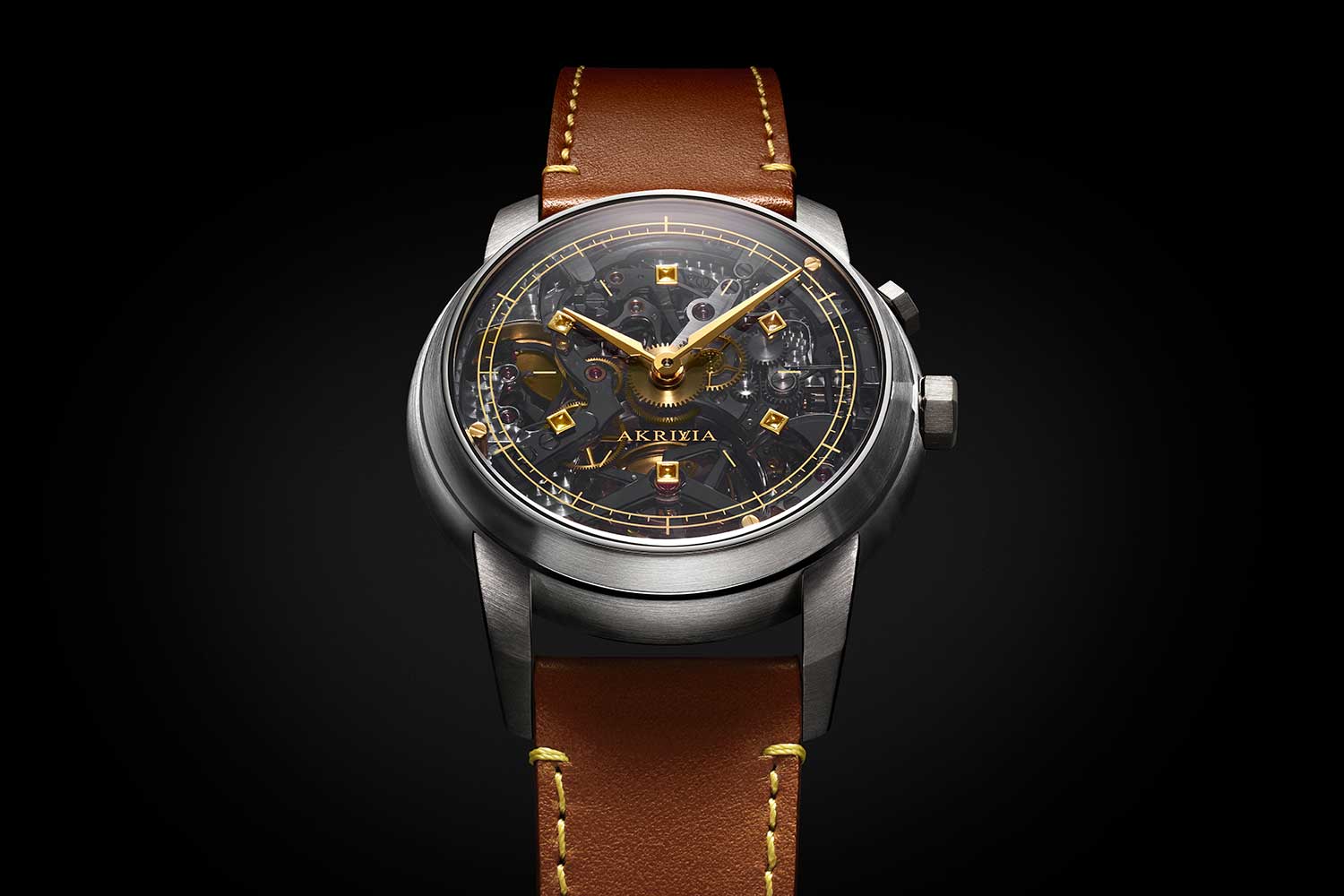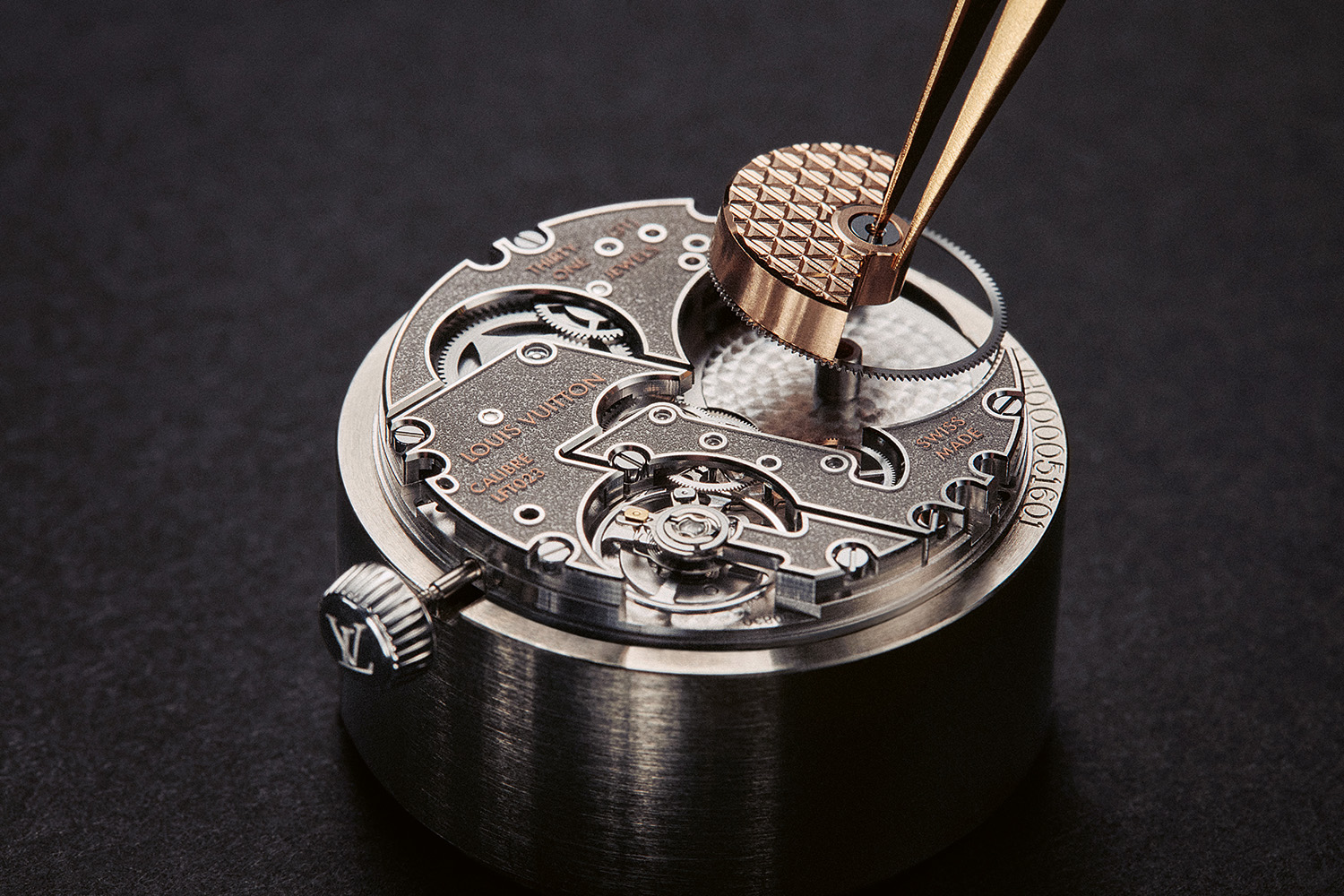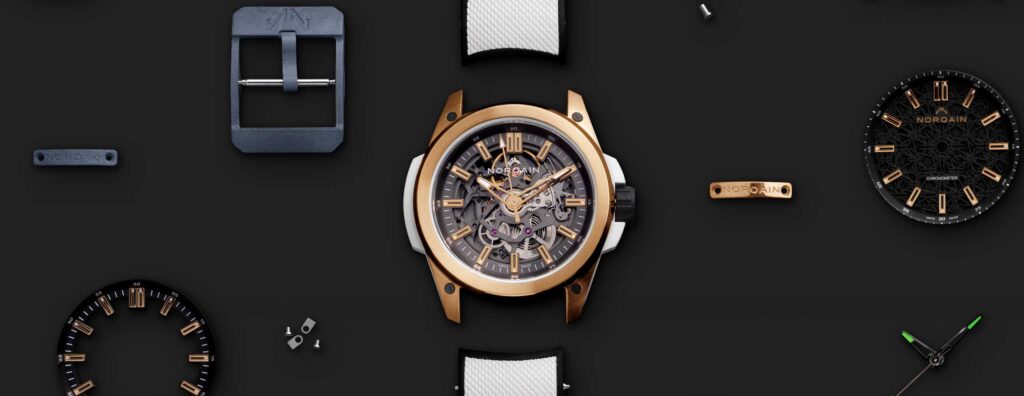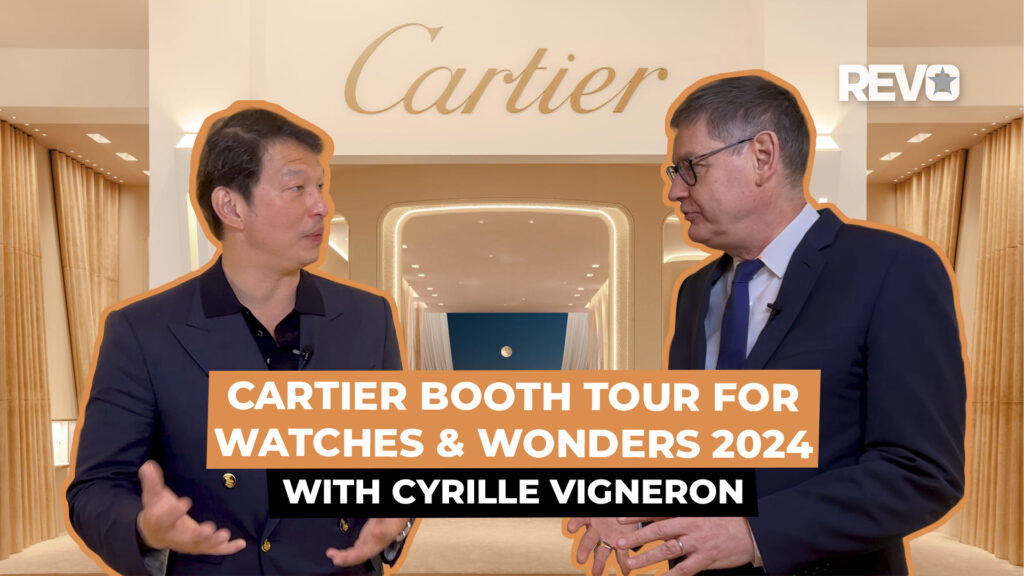The fashion maison has decided that watches are not just accessories anymore
If there is just one single case study in luxury management that needs to be taught in any business school, then it would be
LVMH. Not so much for the magic of revitalizing wearied brands, but more for consistently aligning powerful marketing decisions with financial engineering. And what the group can’t achieve from scratch, they’d just buy the necessary competencies. The watch business unit — which is, in fact, under one roof with the jewelry — is no exception to the rule.
Even though watches are by far not the main business unit within the LVMH empire, its importance is growing. As of today, LVMH’s main watch brands and the jewelry brands also propositioning watches account for ~6% of the group’s sales and ~4% of its EBIT. Comparatively, Louis Vuitton
Horlogerie represents not even 1% of the brand’s sales*, which not only indicates significant latent potential, but also that taking any bold moves — such as repositioning the watch offering at a much higher price point — doesn’t put the brand at risk.
Modest origins in a new category of products
In 1995, LVMH bought Fred Joaillier; this is followed in 1999 by Chaumet, Ebel, TAG Heuer and Zenith. Bulgari’s watches — which account for ~12% of the brand’s total sales — are very successful, though not to the same extent as the jewelry, and are a good example of the group’s long-term vision. Nevertheless, the group hasn’t yet fully achieved what it needs to build up a leading position in the watch business.
As of 2022, the market share of the five brands selling watches accounted for a consolidated ~6.3% of the Swiss watch industry, placing it in fourth position behind Richemont with one-third of the competitor’s sales. In fact, the group even resold EBEL in 1999 after having tried to relaunch a mythical brand of the 1980s and ’90s. The acquisition of Hublot in 2004 then signaled that LVMH did want to muscle up, but the potential growth by acquisition is very limited due to the scarcity of major brands to be potentially acquired.
LVMH will certainly be amongst the first bidders when new opportunities arise for acquisitions, but for the time being it has chosen to build up the fundamentals to become an even more serious player in the watch industry.
The strategic repositioning of Louis Vuitton timepieces
One strong signal coming from the empire of luxury that shows it has ambition in the field of watches is the fact that two of CEO
Bernard Arnault’s sons are working in the watch business unit:
Frédéric Arnault at
TAG Heuer (who is said to be leaving his CEO job there at the end of this year), and
Jean Arnault, the youngest of the five siblings. Jean Arnault has already created a lot of goodwill for himself and the group in a watch industry which generally doesn’t appreciate too many new players entering the turf.

Jean Arnault
Very business savvy and genuinely passionate about watches, Jean has learned a lot in a very short timeframe. Rather than entering the playground with arrogance and disdain for the competitors, he has launched quite a few initiatives reflecting positively on the brand’s ambitions in watchmaking.
Creating the
Louis Vuitton Watch Prize, for instance, is a very good way of becoming a de facto institution for new independent watchmakers and thus monitoring anything arising on the radar with the potential to become the “next big thing”. The whole concept of this prize is very clever, with the winner not only getting a title and a trophy, but also a mentorship, allowing him/her to learn all the trades that are needed, beyond the product, to become a successful brand.

LVMH Watch Prize
And what shows the cleverness of the young patron is the fact that the quite eclectic composition of the jury — comprising recognized watch experts and other personalities — also includes the director of the Grand Prix d’Horlogerie de Genève, which gives it institutional legitimacy.
The watchmaking know-how of Louis Vuitton
Louis Vuitton bought a small R&D and prototyping atelier in 2011 called
La Fabrique du Temps. This was not LV’s first acquisition in the field of watchmaking, but it was certainly a significant one laying the groundstone for the brand’s ambitions in hard luxury. Since then, the small workshop became almost a fully integrated manufacture dedicated to Louis Vuitton and sister brands in need of production capacities for métiers d’art artisanship. La Fabrique du Temps is now capable of manufacturing high-grade enamel or hand-engraved dials, having hired the best artisans to establish the know-how in-house rather than buying finished components.

La Fabrique du Temps Louis Vuitton
It will also integrate the guilloché technique in due course to propose new dial versions and use this hand-turned technique for other components as well.
The manufacture produces fully in-house conceived mechanical calibers and will eventually — in the not-too-distant future — even master the escapement including the hairspring, which is, for the time being, sourced from Atokalpa. The manufacture also produces cases with the ambition to master the whole value chain to produce high-end watches fully in-house.
From a small team of just a dozen people back in 2011, La Fabrique du Temps now employs almost 200 staff — and is still hiring. On top of that, based on its commitment to be part of the watch industry’s eco-system, the company is offering apprenticeships to help absorb the scarcity of qualified people in the Swiss watch industry. This is not only a sustainable and long-term strategy to ensure the planned growth, but also a way to silence the critics saying that Louis Vuitton is behaving in an opportunistic manner to recruit talents from other manufactures.
Enter the new Louis Vuitton Tambour
In 2002 Louis Vuitton launched its first watch collection
Tambour with a very daring design referencing the first portable watches of the 16
th century. The name also refers to the shape of a drum,
tambour in French. The collection was very coherently combining LV’s DNA with bold colors and a mix of mechanical and quartz-powered watches. Using both standard ETA movements and then enhancing the collection with in-house movements such as the Spin Time, the watches were quite successful given the fact that they were sold exclusively through brand-owned boutiques which number 460 doors worldwide.

Louis Vuitton Tambour Gold
Apart from the Emprise collection designed by Marc Jacobs and launched in 2008, the brand has kept a coherent design language. Thereafter, the Tambour collection has become if not iconic then at least a very recognizable reference in the watch world..
Ascending the upper league
It is understandable that Louis Vuitton has carefully studied the successful strategy applied by La Montres
Hermès in recent years. Hermès has been in the watch business a lot longer than Louis Vuitton, having started selling watches in 1928, but at the time it was considered an accessory rather than a product category per se. About a decade ago, Hermès was still selling watches below the €1,000 price point with quartz movements and producing way too many pieces that could be found also on the gray market, which is very detrimental to its brand equity.
Change came with the acquisition of a 25% stake in the Vaucher Manufacture in 2006 and the launch of a new collection of mechanical timepieces. The first attempt to climb the price ladder was — to put it mildly — not very successful. But then product director Philippe Delhotal totally revamped the product lineup through a more coherent strategy that includes developing the métiers d’art dials and incorporating design details coming from the brand’s DNA.
Hermès has since then very successfully changed gears for its watches by eliminating most of its quartz watches, keeping only a few references in its Cape Cod and Arceau product families. The consolidation of the collection has been done very extensively by ousting all entry-level watches that were not in line with the brand’s overall core positioning — a key decision for any luxury brand that wants to move up the luxury ladder. Reducing the number of SKU’s and product families and focusing on high-end watchmaking brought tremendous success to the brand, with sales being tripled in the last five years. The key success factor? A realignment of watches with all other product categories.
The transformation of Louis Vuitton
Why would anyone want to reinvent the wheel at LV? Probably intrigued by the competitor’s major success, Louis Vuitton managed by a watch aficionado — Jean Arnault — has decided to go the same route by taking an academic approach, applying this strategy of aligning the product category with the core price positioning of the brand. The new Tambour that was unveiled in July this year is jumping on the trend of sports chic watches with an integrated stainless-steel bracelet. For the time being, it is offered only in two dial variations at quite a hefty price — although this is understandable due to its intrinsic horological value — of €19,500.

Louis Vuitton Tambour
For the product review itself please read
this story by Revolution founder Wei Koh.I partially agree with Revolution founder Wei Koh’s enthusiastic review of this new watch, because of the great finishing and architecture of the movement, and the strong product identity. However, I’m left wanting more. La Fabrique du Temps is a manufacture with talented watchmakers and an enormous amount of expertise accumulated by the two master watchmakers Michel Navas and Enrico Barbasini, and yet LV decided to go to Le Cercle des Horlogers, owned by Speake-Marin, to develop a new movement? I know I’m setting the bar high, but it’s justified when the brand’s ambition is to become a serious player in a league where there is Audemars Piguet boasting an R&D heavyweight such as APRP (ex-Renaud & Papi and also serving the needs for Richard Mille in which AP holds 10% equity) or Vacheron Constantin with the extraordinary grand complications made by its “Les Cabinotiers” ateliers.

Louis Vuitton Tambour Gold
When I met Jean Arnault in Paris before the presentation to the LV staff, he was very humble by saying that he was hoping that the clients would adhere to this substantial price repositioning compared with the previous product offering. My only question is about the market’s sustainability of continued demand for substitution products compensating for the scarce offering of the grail watches of sports chic, such as the Nautilus and the Royal Oak.

Louis Vuitton Tambour Gold
We have seen the prices on the secondary market come down substantially since March 2022, indicating that the demand is now reflecting the “real” watch buyers and not only the “flippers”. The demand, for instance, for the Girard-Perregaux Laureato has decreased significantly in recent months and will probably continue to do so.

Michel Navas and Enrico Barbasini
But the strong points that could help the new Tambour become a huge success are its very distinctive design, and the beautifully designed and decorated caliber, which is a certified chronometer by the Observatoire Chronométrique de Genève (Timelab). Again, here I would have expected the brand to be more ambitious by applying for the Observatoire Chronométrique OC+ certification, which not only includes precision testing of the watch head (rather than the movement before casing), but also resistance to magnetism, waterproofness and power reserve, in conditions representative of modern life.
And, in an ideal world, to top it all off with the Poinçon de Genève hallmark, which is the knighthood for any high-end movement, and for which today very few brands apply. The technicality here is that, as mentioned above, the movement is not being manufactured at La Fabrique du Temps in the canton of Geneva and can’t be therefore certified with the Poinçon de Genève.
A bold and coherent move to tick all the boxes
Louis Vuitton is following the successful path initiated by La Montre Hermès, but with a slightly different approach — at least for the time being — by capitalizing on the high-end, massively phasing out existing SKU’s (80%), and most importantly, not using anymore third-party movements. The brand has all the credibility to play in the champion’s league of high-end watchmaking, having launched such extraordinary timepieces as the Tambour Opera Automata, which is a feast of micromechanics and artisanship by using engraving and enameling techniques.

Tambour Opera Automata
Collaborations have become very popular between luxury brands, and the watch industry is no exception to this. Collabs are especially interesting when brands with polarized DNA’s associate on a specific project in which each one imparts its own values. One of the best recent examples of such collabs is the MoonSwatch, where Omega and Swatch partnered on a watch paying tribute to a watch icon — the Speedmaster Professional — associating it with specific characteristics of the partnering brands.
Independents to foster the horological content
For its first collaboration — because Louis Vuitton will undoubtedly revisit the exercise — Akrivia is certainly the best choice, because the man behind the brand, Rexhep Rexhepi, is considered to be the leader of a new generation of independent watchmakers. The spectacular Louis Vuitton x Akrivia LVRR-01 Chronographe à Sonnerie is quite a statement in every aspect.

Rexhep Rexhepi
One, for the first time Louis Vuitton is merging its iconic logo with the one from Akrivia. Two, the movement was developed by Akrivia and the dial was enameled at La Fabrique du Temps. Three, Rexhepi deserves a lot of credit for having developed a very sophisticated mechanism with two barrels — one dedicated to the timekeeping functions and the chronograph, the other one for the chiming function. Four, the movement includes a five-minute tourbillon.

Rexhep Rexhepi Chronomètre Antimagnétique
All said, I’m not a huge fan of the dichotomous design with one side using the Louis Vuitton codes and on the other side the Akrivia design codes. The case seems also a little bit bulky in trying to keep it below the 40mm mark, which is a deal-breaker for some watch collectors. I think it would have made the watch a lot more elegant with an additional 1–2mm in diameter to cope with the thickness of the movement.
Lastly even though there is a competing watch which came out recently — the Omega Chrono Chime which set the bar very high in terms of movement architecture, finishing and beauty of the dial (the Speedmaster version) — the first Louis Vuitton collaboration is most probably already sold out. Proceeds of the sales will fund the LV Watch Prize, which is one more argument for the watch on top of being ultra-rare with only 10 pieces being produced.

Louis Vuitton x Akrivia LVRR-01 Chronographe à Sonnerie
LVMH’s choice to use its flagship brand to venture into high-end watchmaking is clever because it’s not putting the brand at risk, yet it enables the group to build up a real legitimacy in the horological field, even though Bulgari can already boast a legitimacy acquired over the last three decades. The core strategy of Louis Vuitton is not only targeting the product or industrial competencies, but building up a 360-degree project with know-how, manufacturing capacities and a long-term vision — just as the group has done before in soft luxury.
This is a very clever way of associating Louis Vuitton with genuine craftsmanship content made in collaboration with an artisan watchmaker. Such drops will help to foster the value perception by the collectors who might be questioning the legitimacy of a brand lacking the horological heritage of competing brands.
Louis Vuitton is the base of LVMH’s push into the watch industry
Even if in terms of sales, LV’s watch business is marginal for the brand’s revenues — an estimated 0.75% — the repositioning into the haute horlogerie market segment is significant because it will allow LVMH to push its other brands, foremost TAG Heuer and Zenith. It also lays the ground for the relaunch of Gérald Genta and Daniel Roth — two brands that had been absorbed by Bulgari, which were subsequently acquired by LVMH in 2011.
*LVMH does not publish figures at brand level and all figures indicated in this article are based on estimates by Morgan Stanley’s research.

























